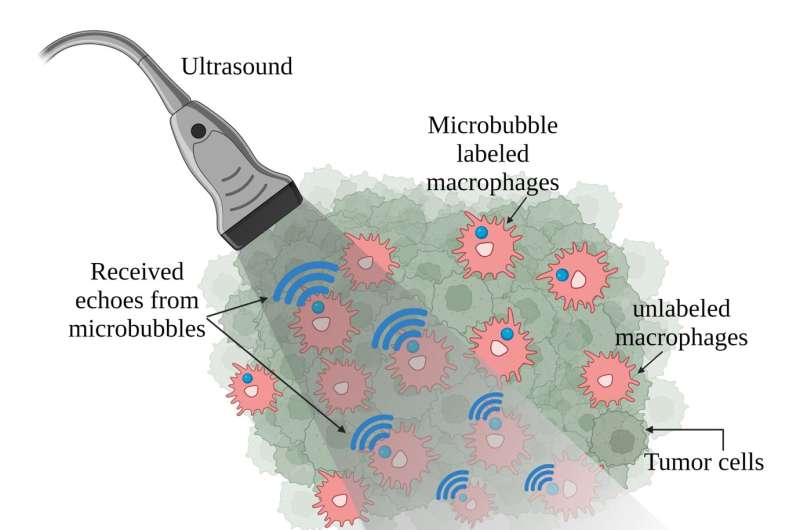This article has been reviewed according to Science X's editorial process and policies. Editors have highlighted the following attributes while ensuring the content's credibility:
fact-checked
trusted source
proofread
Microbubble macrophages track tumors

Macrophages, a type of white blood cell, defend the body by engulfing and digesting foreign particles, such as bacteria, viruses, and dead cells. The immune cells also tend to accumulate in solid tumors, so tracking them could enable new ways to detect cancer and the earliest stages of metastasis.
As part of the 184th Meeting of the Acoustical Society of America, Ashley Alva of the Georgia Institute of Technology will describe how attaching microbubbles to macrophages can create high-resolution and sensitive tracking images useful for disease diagnosis. Her presentation, "Tracking macrophages with ultrasound," will take place Monday, May 8, at 12:15 p.m. Eastern U.S. in the Armitage room, as part of the meeting running May 8-12 at the Chicago Marriott Downtown Magnificent Mile Hotel.
Other techniques, such as optical imaging, MRI, and PET scans, have been used to image macrophages, but each comes with its own disadvantages. Optical imaging has a low penetration depth, so it is limited to immune cells very close to the skin's surface. MRI can provide detailed information about the macrophage and tumor environment but struggles to detect small numbers of cells. PET scans are sensitive but have low resolution and require ionizing radiation.
"Ultrasound could potentially overcome these limitations, as it is nonionizing, noninvasive, and has great depth of penetration," said Alva.
By attaching microbubbles to macrophages, Alva and her team made it so the cells would send back an echo when hit with ultrasound. This allowed them to visualize the macrophages in vivo with high resolution and sensitivity.
"In the future, we envision harvesting macrophages from patients, labeling them with microbubbles, and reinserting them to improve diagnosis using ultrasound tracking methods and algorithms we are currently developing," said Alva. "If needed, the harvested macrophages could also be engineered to become more sensitive to certain disease characteristics before being reinjected into patients."
Visualizing macrophages in vivo could also provide a powerful tool for understanding immune responses and monitoring therapeutic efficacy.
More information: Conference: acousticalsociety.org/asa-meetings/



















